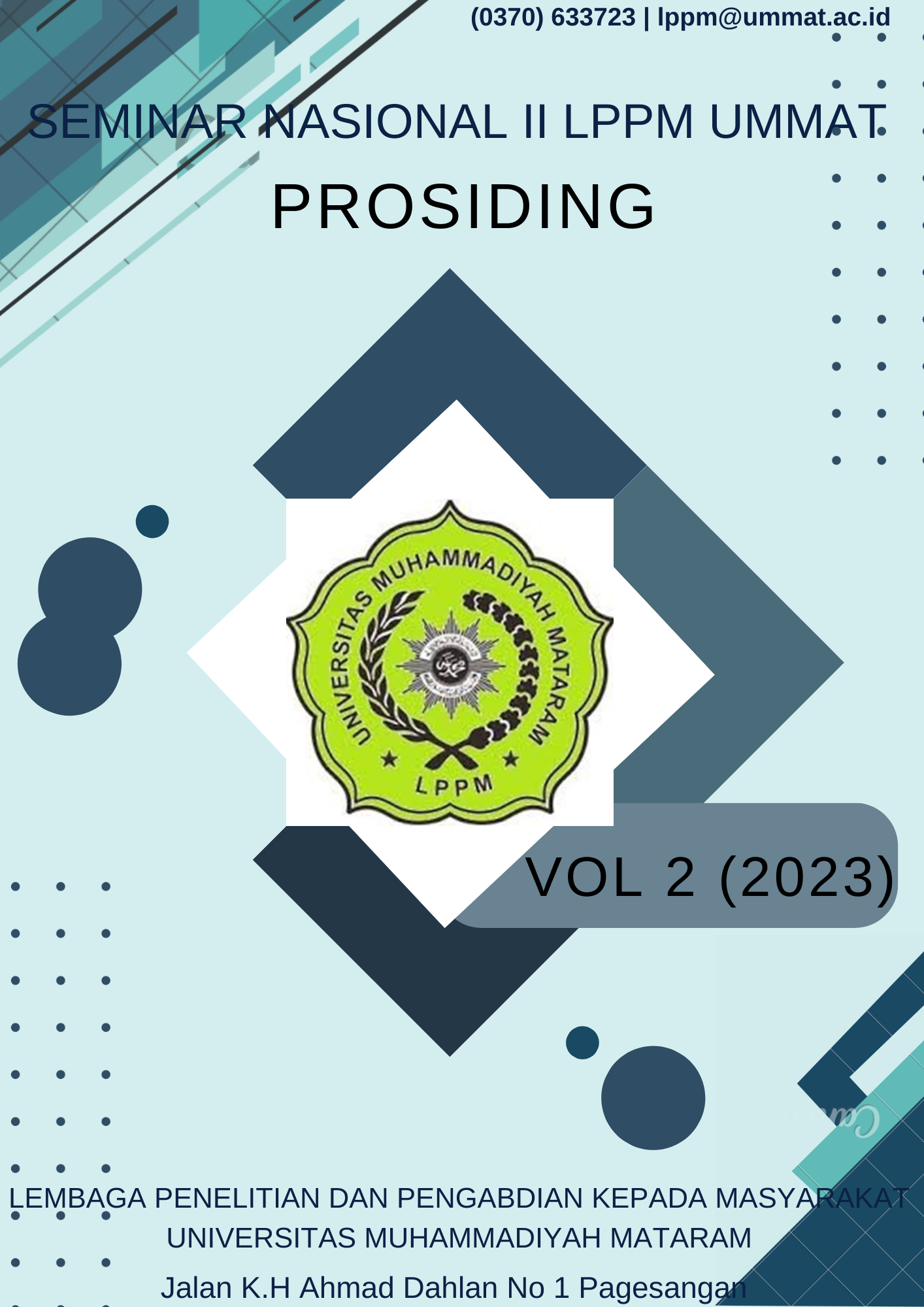Menejemen Fisioterapi Dengan Terapi Latihan Pada Kasus Pasca Operasi Posterior Crutiate Ligamen Setelah Immobilisasi Selama 1 Bulan
Keywords:
Cedera PCL, Posterior Crutiate Ligamen, Terapi LatihanAbstract
Abstract: The posterior cruciate ligament is one of the ligaments in the knee that functions to limit tibial translation posteriorly and provide secondary restraint for tibial rotation. The most frequently reported adverse effects after PCL injury are residual posterior laxity, loss of flexion phase, and osteoarthritis. as a long term complication. Purpose: a specialized rehabilitation program of exercise therapy is essential for patients with PCL injuries to improve knee biomechanics, reduce knee loads and reduce the likelihood of degenerative changes. Results: Based on the final results of the evaluation of the program given, giving massage, patella mobilization, and exercise therapy can reduce pain intensity, increase muscle strength, increase joint range of motion, and change in leg swelling. Conclusion: exercise therapy can reduce pain intensity, increase muscle strength, increase joint range of motion, and change swelling in the legs.
Abstrak: Ligamentum cruciatum posterior merupakan salah satu ligamen pada lutut yang berfungsi untuk membatasi translasi tibia ke arah posterior dan memberikan pengekangan sekunder untuk rotasi tibialis. Efek samping yang paling sering dilaporkan setelah cedera PCL adalah sisa kelemahan posterior, hilangnya fase fleksi, dan osteoarthritis. sebagai komplikasi jangka panjang. Tujuan: program rehabilitasi khusus terapi latihan sangat penting bagi pasien dengan cedera PCL untuk meningkatkan biomekanik lutut, mengurangi beban lutut, dan mengurangi kemungkinan perubahan degeneratif. Hasil: Berdasarkan hasil akhir evaluasi terhadap program yang diberikan, pemberian massase, mobilisasi patella, dan terapi latihan dapat menurunkan intensitas nyeri, meningkatkan kekuatan otot, meningkatkan rentang gerak sendi, dan perubahan pembengkakan pada tungkai. Kesimpulan: terapi olahraga dapat menurunkan intensitas nyeri, meningkatkan kekuatan otot, meningkatkan rentang gerak sendi, dan mengubah pembengkakan pada tungkai.
References
Escamilla, R. F., MacLeod, T. D., Wilk, K. E., Paulos, L., & Andrews, J. R. (2012). Cruciate ligament loading during common knee rehabilitation exercises. Proceedings of the Institution of Mechanical Engineers, Part H: Journal of Engineering in Medicine, 226(9), 670–680. https://doi.org/10.1177/0954411912451839
Jay, K., Sundstrup, E., Søndergaard, S. D., Behm, D., Brandt, M., Særvoll, C. A., Jakobsen, M. D., & Andersen, L. L. (2014). Specific and Cross Over Effects of Massage for Muscle Soreness. The International Journal of Physical Therapy, 9(1), 82–91.
Kim, J. G., Lee, Y. S., Yang, B. S., Oh, S. J., & Yang, S. J. (2013). Rehabilitation after posterior cruciate ligament reconstruction: A review of the literature and theoretical support. Archives of Orthopaedic and Trauma Surgery, 133(12), 1687–1695. https://doi.org/10.1007/s00402-013-1854-y
Logerstedt, D. S., Scalzitti, D., Risberg, M. A., Engebretsen, L., Webster, K. E., Feller, J., Snyder-Mackler, L., Axe, M. J., & McDonough, C. M. (2017). Knee stability and movement coordination impairments: Knee ligament sprain revision 2017. Journal of Orthopaedic and Sports Physical Therapy, 47(11), A1–A47. https://doi.org/10.2519/jospt.2017.0303
Lu, C. C., Yao, H. I., Fan, T. Y., Lin, Y. C., Lin, H. T., & Chou, P. P. H. (2021). Twelve weeks of a staged balance and strength training program improves muscle strength, proprioception, and clinical function in patients with isolated posterior cruciate ligament injuries. International Journal of Environmental Research and Public Health, 18(23). https://doi.org/10.3390/ijerph182312849
Raj, M. A., & Varacallo, M. (2019). Posterior Cruciate Ligament (PCL) Knee Injuries. StatPearls, August. http://www.ncbi.nlm.nih.gov/pubmed/28613477
Senese, M., Greenberg, E., Todd Lawrence, J., & Ganley, T. (2018). Rehabilitation Following Isolated Posterior Cruciate Ligament Reconstruction: a Literature Review of Published Protocols. International Journal of Sports Physical Therapy, 13(4), 737–751. https://doi.org/10.26603/ijspt20180737
Shelbourne, K. D., Clark, M., & Gray, T. (2013). Minimum 10-year follow-up of patients after an acute, isolated posterior cruciate ligament injury treated nonoperatively. American Journal of Sports Medicine, 41(7), 1526–1533. https://doi.org/10.1177/0363546513486771
UW. (2018). Rehabilitation Guidelines for Posterior Cruciate Ligament Reconstruction. Health Sports Rehabilitation, 4–9.
Vielgut, I., Weiglein, A., Biber, S. M., Dreu, M., Leithner, A., Hohenberger, G., & Sadoghi, P. (2020). Successful reconstruction of the posterior cruciate ligament: assessment of posterior cruciate ligament footprints using an objective coordinate system. Surgical and Radiologic Anatomy, 42(10), 1219–1223. https://doi.org/10.1007/s00276-020-02520-9
Downloads
Published
Issue
Section
License

This work is licensed under a Creative Commons Attribution-ShareAlike 4.0 International License.

